Princess 4 Litre 'R'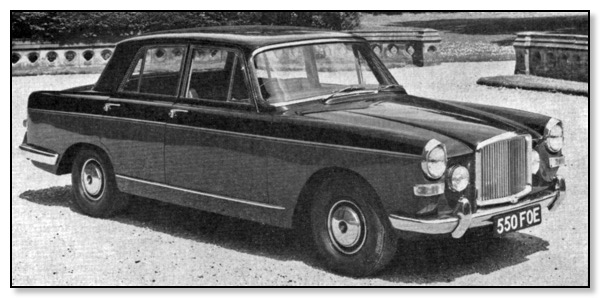
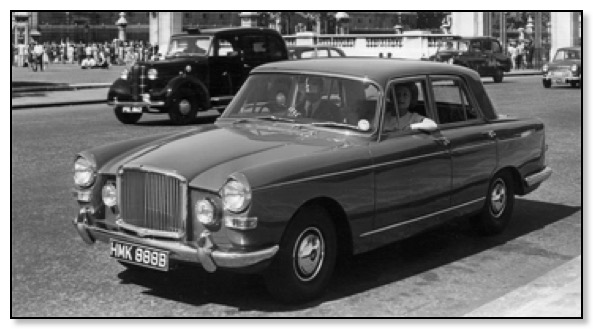
It was in 1962 that BMC and Rolls Royce were in talks to discuss technical co-operation. In August 1964 the Vanden Plas 4 litre 'R' came out, this was based on the Princess 3 litre. body and suspension. The idea behind the deal was to produce an upmarket executive car. Various options were looked at, but as time went on, Rolls Royce got less interested, and so BMC decided to take the 3,909 cc Rolls-Royce FB 60 engine and install it in a revised Princess 3 litre body.
Speaking at the Press conference at which the Princess R was announced by Mr. G. W. Harriman, Chairman and Managing Director of B.M.C. said that some 2-11 years ago there was much speculation about the talks B.M.C.
The speculation took many different forms, ranging from a merger with Rolls-Royce to the production of a Mini Rolls, but they encouraged BMC in thinking that the Press, who voice the thoughts of the public, welcomed the principle of two great British companies co-operating to give the motoring public of the world an example of fine British engineering.
'The history in developing this car,' he said, 'has been one of close collaboration between Rolls-Royce and BMC, and I would like to take this opportunity of paying tribute to both sides who have co-operated so very well in producing this fine motor-car.
'Both Companies, although working jointly on this project, have been able to maintain their own separate identity and our arrangement in the strict legal sense is one of supplier and manufacturer, Rolls-Royce making the engines and BMC the rest. There has, however, development between us a mutual understanding and appreciation of each other's capabilities, and I am sure we shall continue to enjoy this association for many, many years to come.
'Thrilled'
'The car they had just seen was the result of the talks. 'I am sure,' added the Chairman,' that when you have had an opportunity of driving one you will be as thrilled with its luxury and performance as we are.' Dr. F. Llewellyn Smith, Managing Director of the Car Division of Rolls-Royce, said the occasion was one of great importance in the British motor trade. 'It is a comparatively rare occurrence for BMC to buy a car engine from another manufacturer,' he said,' it is a completely unique occurrence for Rolls-Royce to sell one to another car manufacturer, although, of course, we have sold plenty for other purposes.
Unsurpassed
'The logic behind this arrangement would, he thought, be obvious to everyone. It was made between two firms, both British to the backbone, who had through the course of many years acquired positions and reputations of world-wide significance but in quite different fields. One as an outstanding producer in volume of first-class low- and medium-priced cars, the other as a producer with 60 years' experience of high-priced cars in small quantities but in what they liked to think of as unsurpassed quality.
Another spur to the joint venture was the blow dealt by the Chancellor of the Exchequer in 1961, when tax relief on company cars was limited to those costing under £2,000. Rolls-Royce sales dropped from a record level of 2,400 a year. But discussions between the heads of the two companies soon revealed a logical.common interest in a new sector of the quality car market - one which could developed too, as motorists grew increasingly selective.
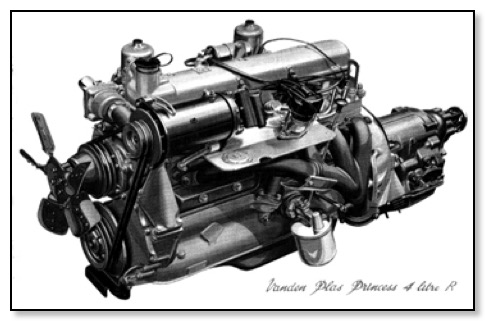
Rolls Royce FB 60 engine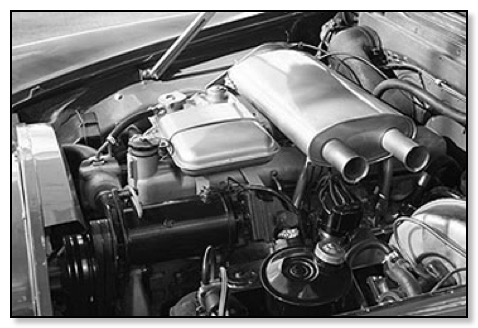
Under the Bonnet
The alloy-block engine was a revised version of an earlier engine which had been used in many military vehicles, and was actually produced at Longbridge for the Austin Champ.
It was in 1958 that Rolls-Royce decided to make an aluminium alloy version of the six-cylinder 130bhp as an experimental unit. It was over-square with a moderate compression ratio and proved to produce more power and had faster response to the throttle along with having only four litres capacity.
After various modifications taking place, mainly to redesign components for mass production, BMC gave the go-ahead, and in 1963 a new line was laid at Rolls Royce Crewe factory. This new 3909cc engine weighs only 450lb and with a compression ratio 7.8 to 1 develops 175 bhp at 4,800 rpm.
It used a Borg-Warner model 8 automatic gearbox, which was an upgraded model 35 which was used on a variety of vehicles. Power steering was the standard Hydrosteer supplied by Cam Gears, some people thought the steering was too light.
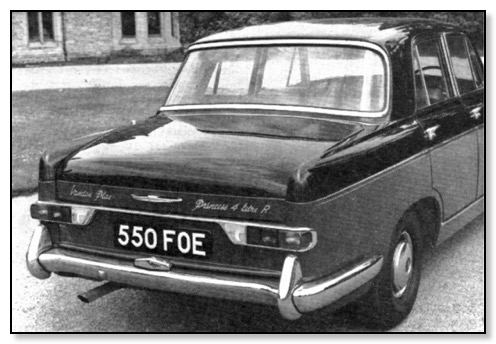
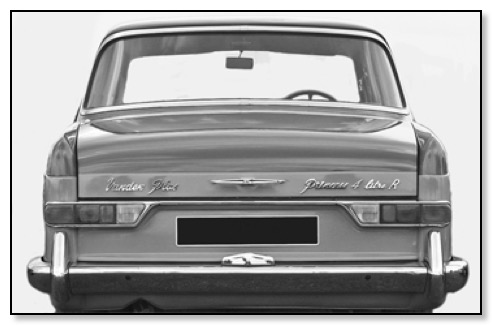
Although body changes to the 4 litre R at first glance seemed few, the most obvious was at the rear with rounded rear fins and different light clusters, along with a raised boot sill. Top of both the front and rear glass blended into the roof line, giving a more pleasing look. Increased headroom was achieved by having a more vertical rear window. At the front the fog lamps were recessed in what was the horn apertures on the 3litre along with larger lamps for the side-flashers units. Also when the sidelights are switched on both the stop lamps and flasher units are automatically dimmed.
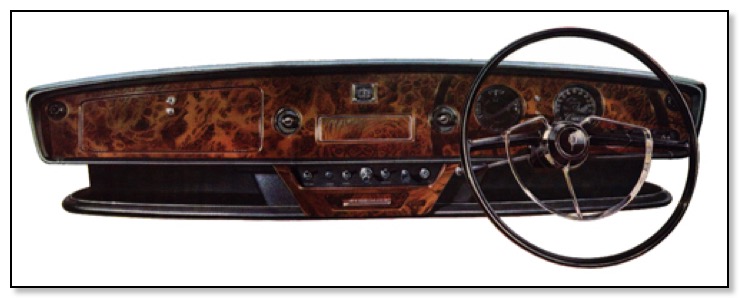
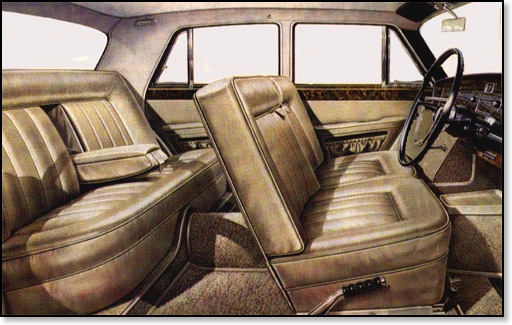
The interior fully maintains the high stands associated with Vanden Plas coach building. Walnut fascia, door sills and picnic tables for the rear passengers impart the right air of luxury to a car of this class. The seats all have hide upholstery, and both the front seats are fully reclining. With a full set of instruments a cigar lighter, map reading light, and fresh air vents are provided. The 'R' was quieter than the 3litre as more sound deadening material was been used on the floor, bulkhead and under-bonnet.
The prime market for the model was in the USA. but sales were slow, although about 4,500 were sold between 1964/68. In the UK and Europe sales were about 2,000 with the total produced over the four years been 6,555. Production was to be about 100 vehicles a week, although this was probable achieved in the early life of the car. With production exceeding sales, it was necessary to reduce production according, at one time they were been stockpiled. I think that one of the main reason that sales were disappointing was that the body style was not that different to the 3 litre. Cost also was a factor, as at £1994, it was over £500 more than the 3 litre.
Production of the body-running gear was at Morris Cowley plant, then they were transported down to the Vanden Plas factory at Kingsbury London, where the interior trim was fitted.
Date when launched August 1964 Discontinued in 1968
Total produced 6,781
Engine Rolls Royce FB 60
3,909cc 175 bhp at 4,800 rpm Max torque 218lbs/ft at 3,000 rpm
Main measurements
Length 15ft 8ins Width 5ft 8.5ins Height 4ft 11ins
Wheelbase 9ft 2ins Track front 4ft 6.9ins rear 4ft 5.3ins
Price at launch £1,994

